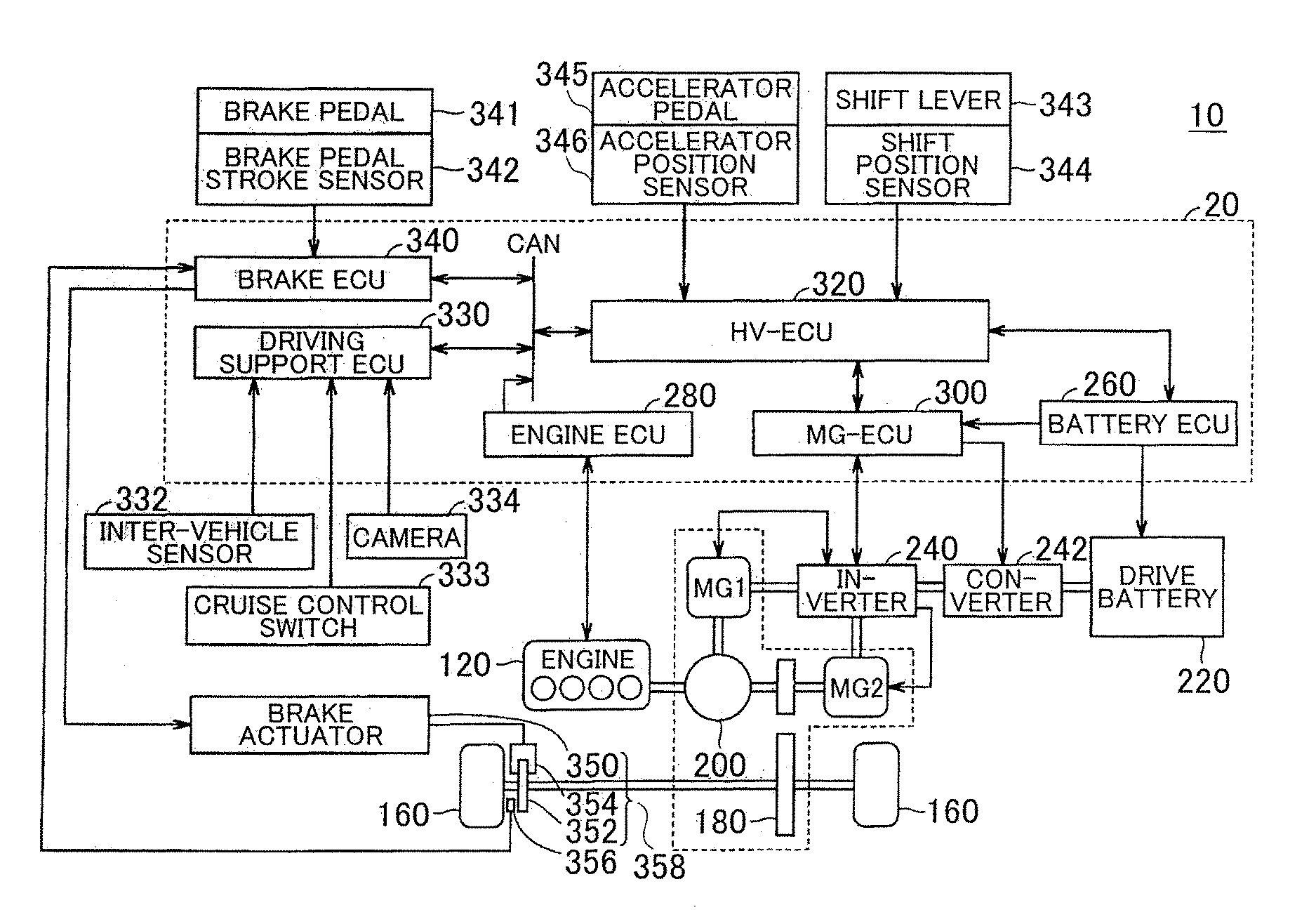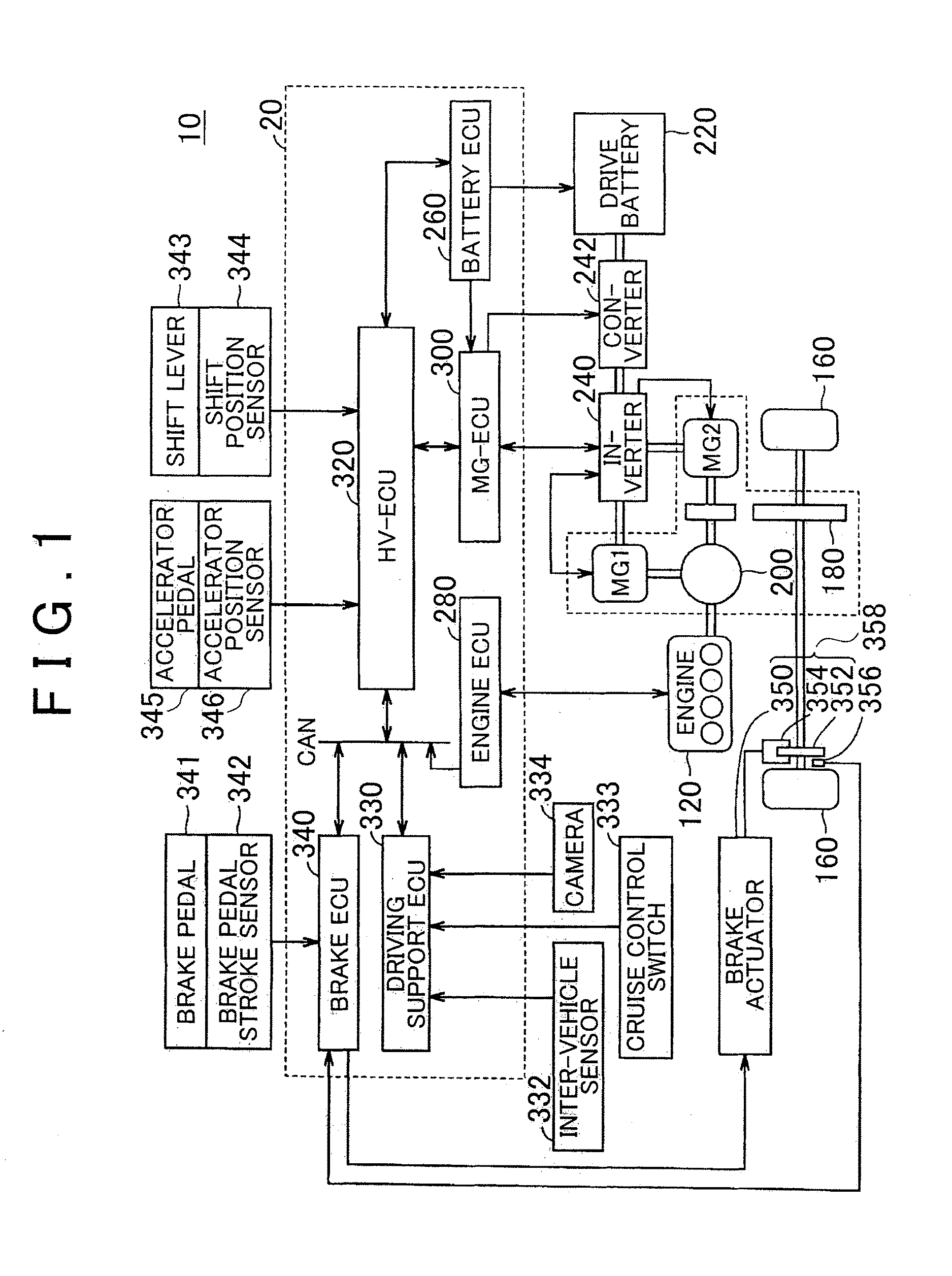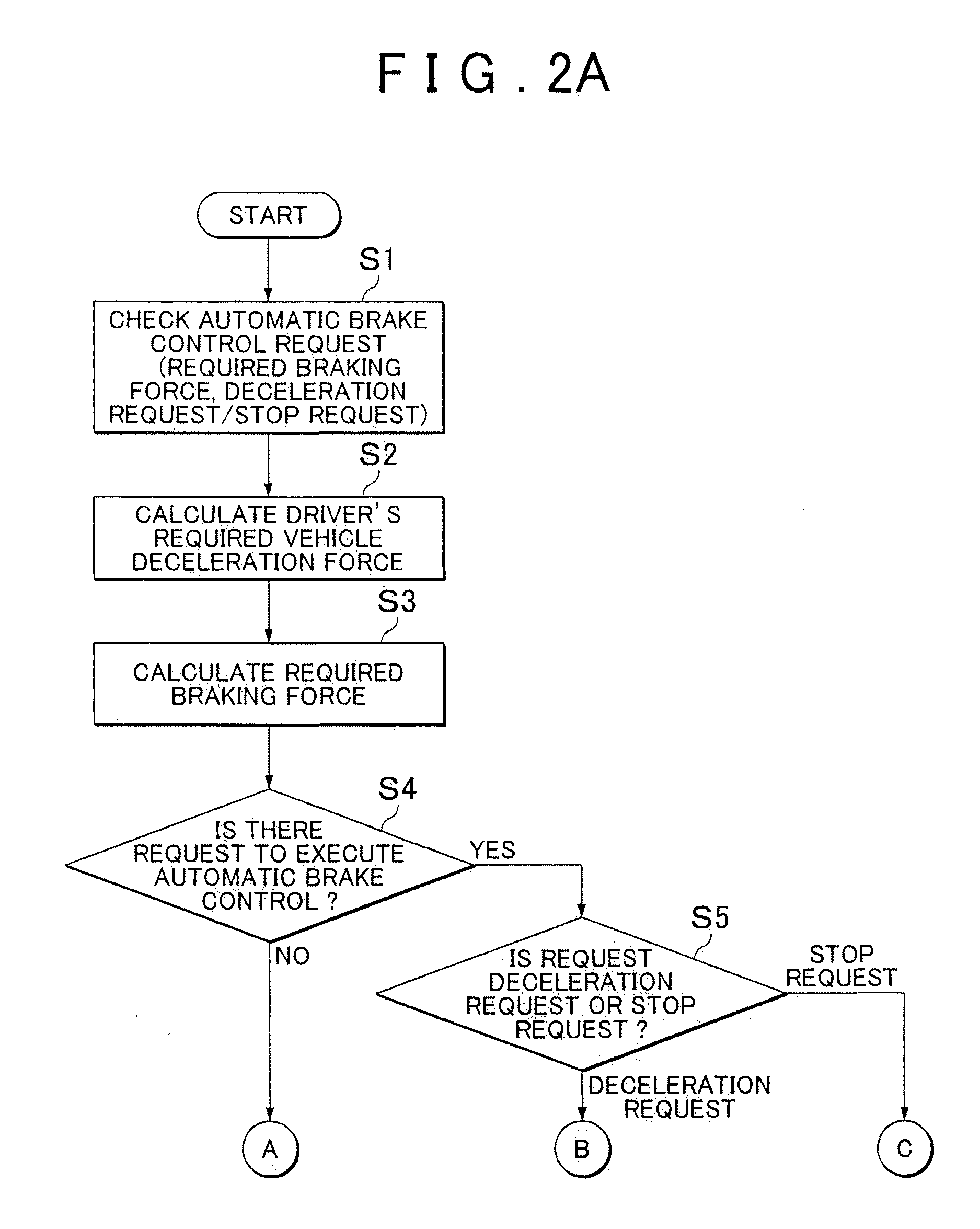Vehicle
a technology for vehicles and braking systems, applied in the field of vehicles, can solve the problems of time-consuming switching of braking force, different desired braking, etc., and achieve the effect of improving fuel consumption and reducing braking distan
- Summary
- Abstract
- Description
- Claims
- Application Information
AI Technical Summary
Benefits of technology
Problems solved by technology
Method used
Image
Examples
Embodiment Construction
[0022]Hereinafter, an embodiment of the invention will be described in detail with reference to the accompanying drawings. Like reference numerals denote the same or corresponding portions in the drawings, and the description thereof will not be repeated.
Description of Outline of Vehicle Including Brake System
[0023]FIG. 1 is a block diagram that shows the major configuration of a vehicle according to the embodiment. As shown in FIG. 1, the vehicle 10 according to the present embodiment includes a brake pedal 341 (brake operating unit), a friction brake 358, a regenerative brake and a control unit 20. The brake pedal 341 is operated by a driver. The regenerative brake uses a motor generator MG2. The control unit 20 controls the total braking force that is generated in the vehicle 10 by using the friction brake 358 and the regenerative brake. The control unit 20 executes ordinary brake control or automatic brake control. In the ordinary brake control, the vehicle is braked on the basi...
PUM
 Login to View More
Login to View More Abstract
Description
Claims
Application Information
 Login to View More
Login to View More - R&D
- Intellectual Property
- Life Sciences
- Materials
- Tech Scout
- Unparalleled Data Quality
- Higher Quality Content
- 60% Fewer Hallucinations
Browse by: Latest US Patents, China's latest patents, Technical Efficacy Thesaurus, Application Domain, Technology Topic, Popular Technical Reports.
© 2025 PatSnap. All rights reserved.Legal|Privacy policy|Modern Slavery Act Transparency Statement|Sitemap|About US| Contact US: help@patsnap.com



